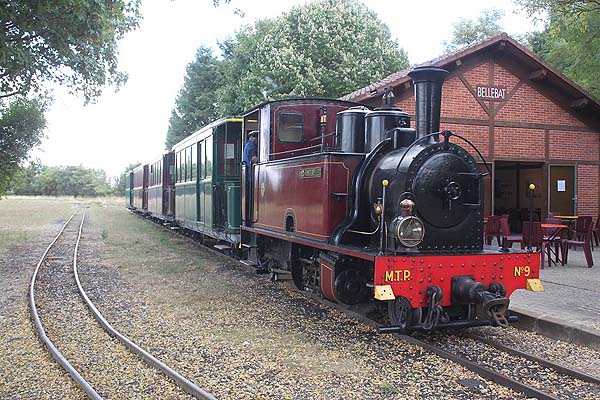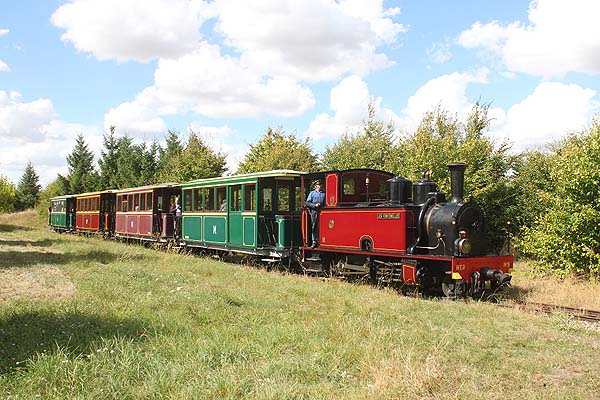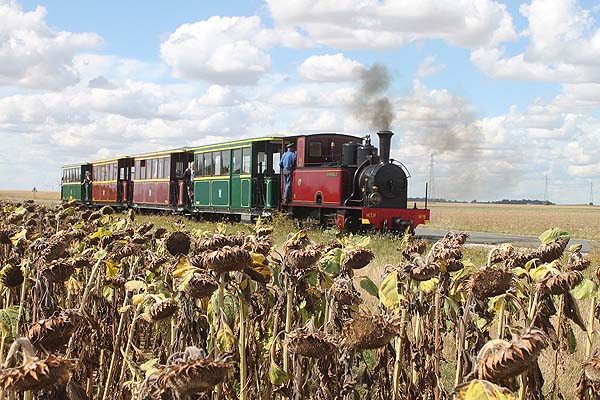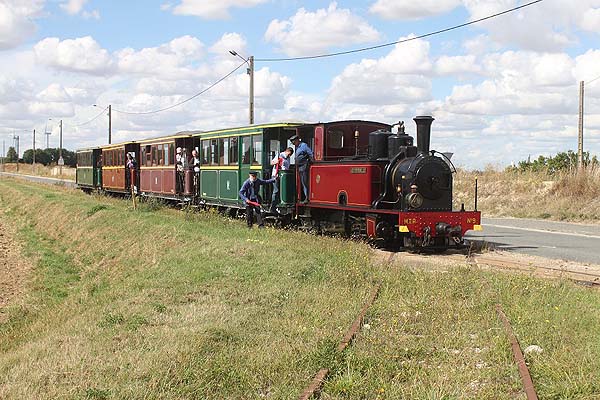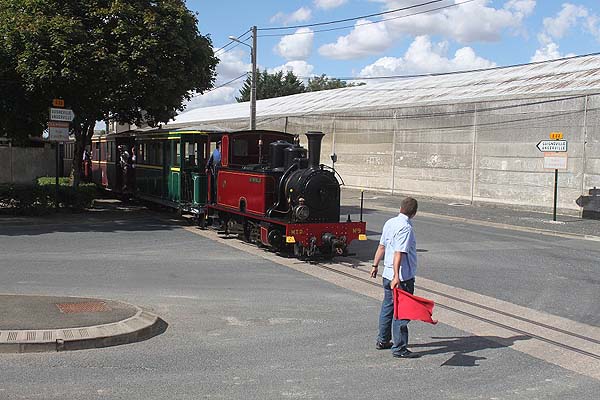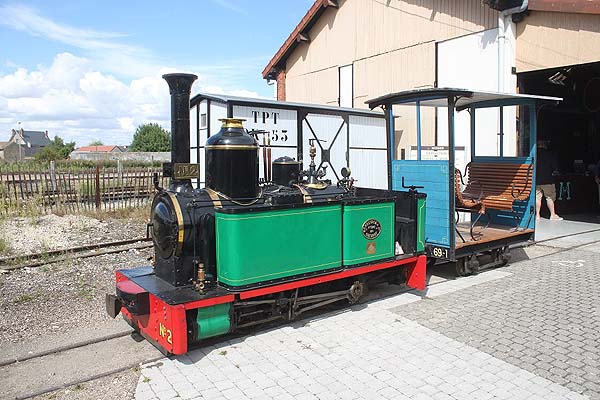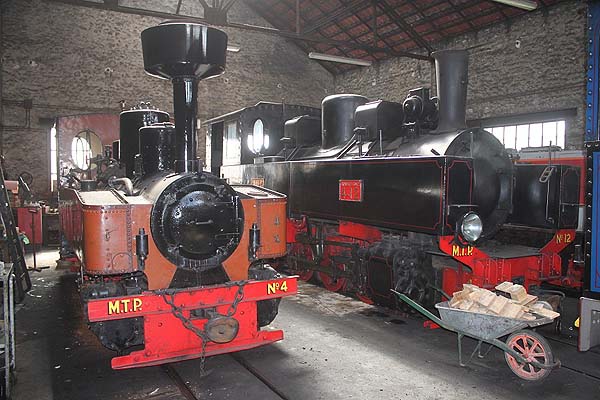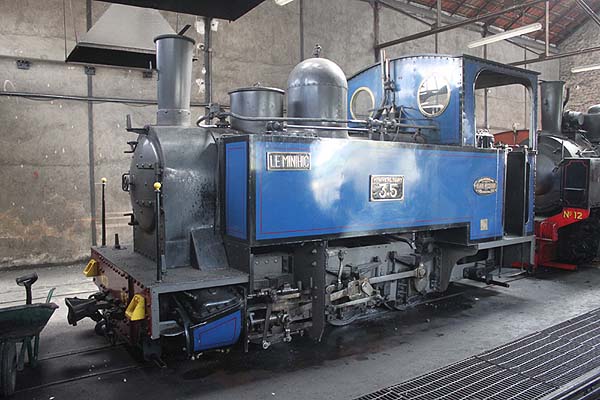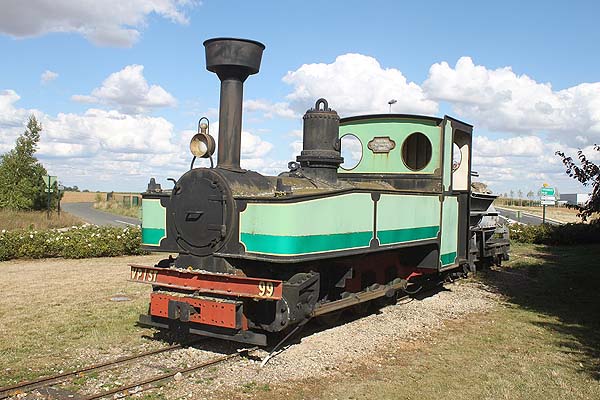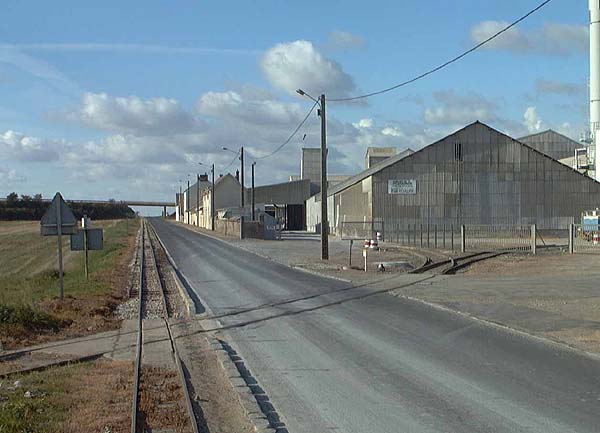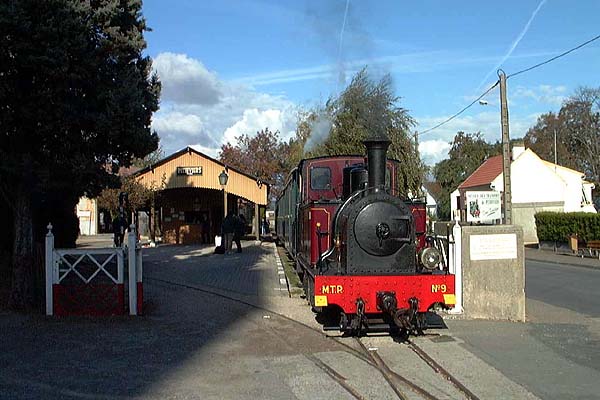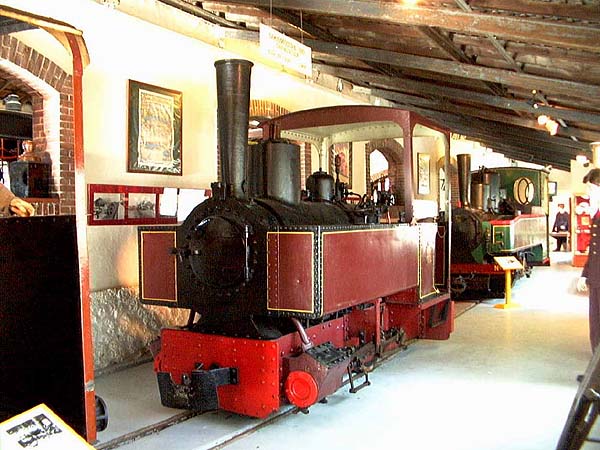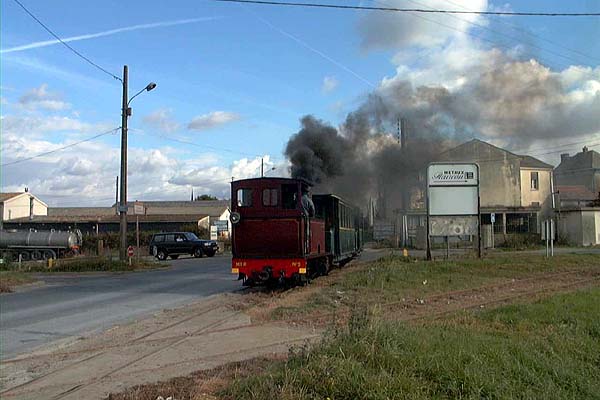|
Tramway de Pithiviers à Toury |
|
|
The original report here was uploaded in 2009 although it referred to a 2002 visit. Thomas Kautzor was here briefly on Sunday 8th September 2013 and has sent some pictures of the first afternoon train at Pithiviers. MTP 2-6-0T 9 LES FONTENELLES (La Meuse ) was in charge of the train for the day. The box car at the rear is the bar car and was taken off the train at Bellébat. The standard gauge private siding which crosses the line just outside Pithiviers is now disused, after the fertilizer factory was closed.
At the museum, Schneider 0-4-0T 1347/1870 () together with the little Decauville coach had been brought out into the sun.
In the shed, 0-8-0T 4 (Henschel 14923/1917, ex Sablières de Bourron No. 10, ex HFB 993), 0-8-0T 12 (SAFB 2843/1945, ex TPT 4-12) and 0-6-0T 5 LE MINIHIC (ANF 282/1902, ex TPT 3-5, ex Paramé-Rotheneuf) are all three operational.
On the way back to Paris, I found a Brigadelok plinthed in the middle of a roundabout just north of town. I believe it is Henschel 14513/1916 ex Sablières de Bourron No. 3 (with boiler Henschel 15273/1917).
James Waite writes about his 2002 visit. The Tramway de Pithiviers à Toury (TPT) was always one of those legendary French light railways. Built by the Decauville concern it was more of a system than just a railway with many branches and lengthy sidings to connect the sugar beet farms in the district it served. The transport of sugar beet to the big factories in Pithiviers and Toury was its major business although it was a common carrier and operated passenger services until 1952. The last sugar beet train ran in 1964. Today's museum railway operates over a small portion of the old system at the Pithiviers end. The preservation society got off the ground as soon as the closure occurred and so was able to take over the railway's extensive installations at Pithiviers more or less intact. Today the railway runs from the old station at Pithiviers to the east of the SNCF station (now freight-only), drops down to pass under the SNCF line and heads north westwards out of the town alongside a major road - typical of much of the old line. There's a level crossing over a standard gauge siding on the outskirts of the town and, 1km or so further on, the main road south from Paris which bypasses the town crosses on an overbridge. Soon after the line veers away from the old formation and reaches a balloon loop. This is Bellebat station, a little over 3km from Pithiviers and the limit of operations. No-one can say that this is a scenic part of France and the roadside nature of the line across the flat countryside limits its photographic potential. However there are some attractive pictures to be had around the station area and the main line bridge at Pithiviers, alongside the factory served by the standard gauge siding which crosses the line and at the bypass bridge. There's a good museum alongside the station with several well-restored 600mm gauge locos and also one metre gauge machine on loan form the FACS. The working locos, too, are most attractive, particularly no. 10, a Decauville 0-6-2T which looks to me to be a classic Decauville product. There's also a tiny Schneider 0-4-0T dating from 1870 which is a truly delightful little loco. On the debit side most of the TPT's locos which survived at the closure moved to other preservation sites in France and further afield. There's only one of the original locos left on the line that's still in working order. Nonetheless this is a railway which oozes with Frenchness and is well worth a visit. Its website is at http://assoc.pagespro-orange.fr/amtp45/fr.html. Steam stock list 600mm gauge
Metre Gauge
No's. 2, 5, 9, 10 and 12 have been in working order in recent years. Pictures (all taken on 6th October 2002) This view from the rear balcony of a train returning to Pithiviers from Bellebat gives a fair idea of the character of the line. The standard gauge crossing is in the foreground and there's a standard gauge diesel serving the factory partly in frame at the extreme right. The Pithiviers bypass bridge is in the distance.
No. 9 at Pithiviers station.
No. 6, surely one of the smallest Decauville locos ever built, in the museum with no. 7 behind.
No. 9 crossing the standard gauge siding.
|
|
